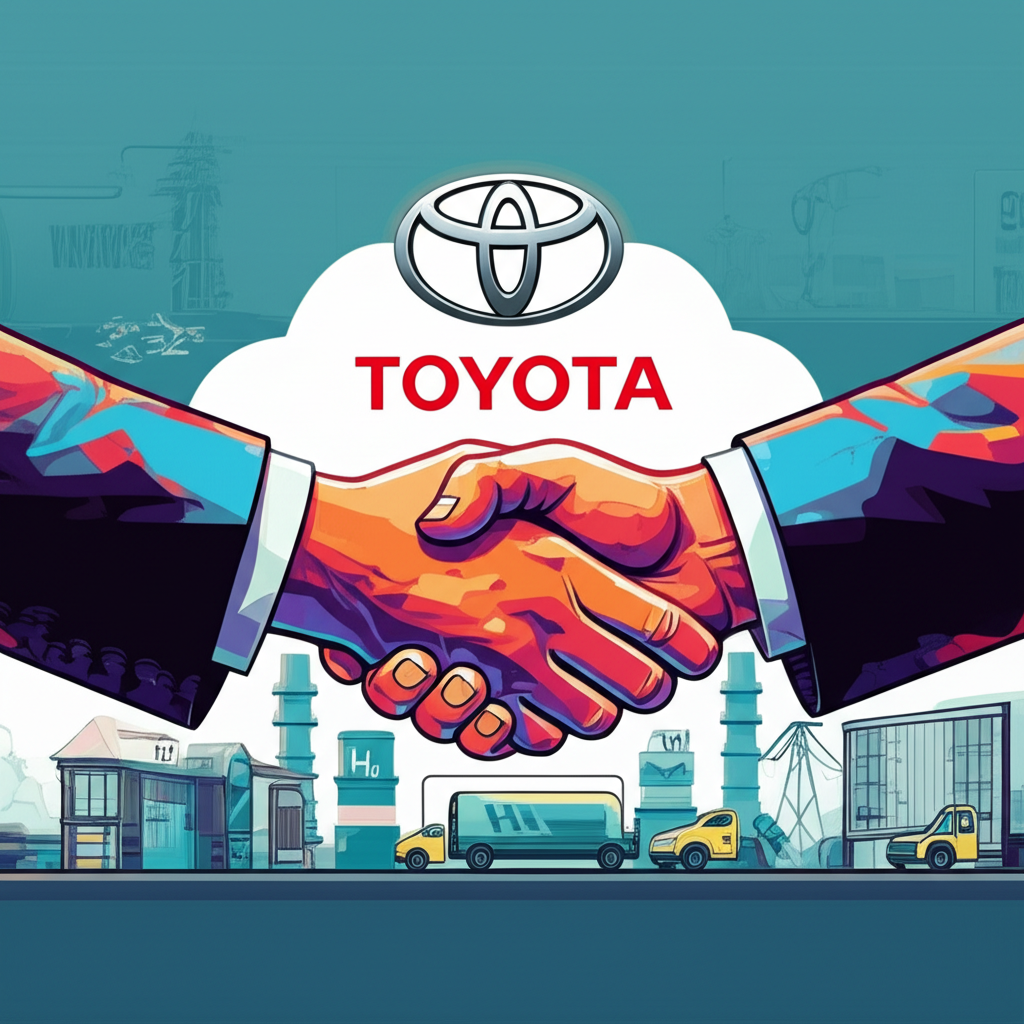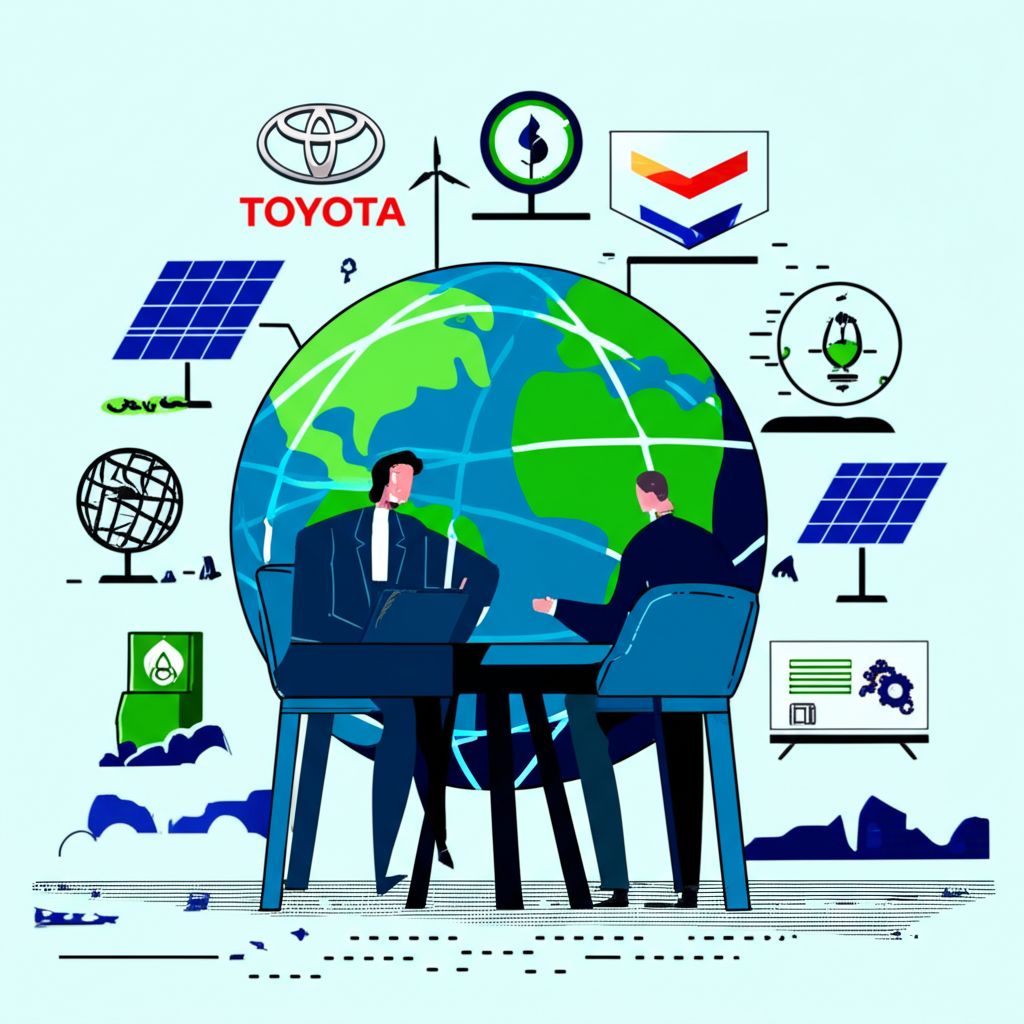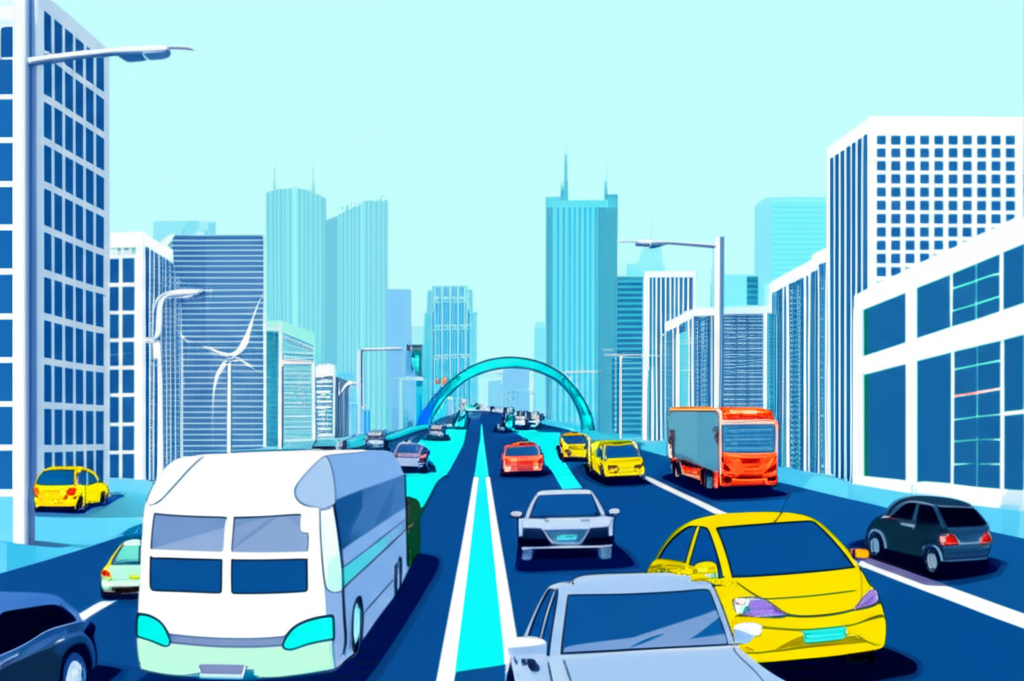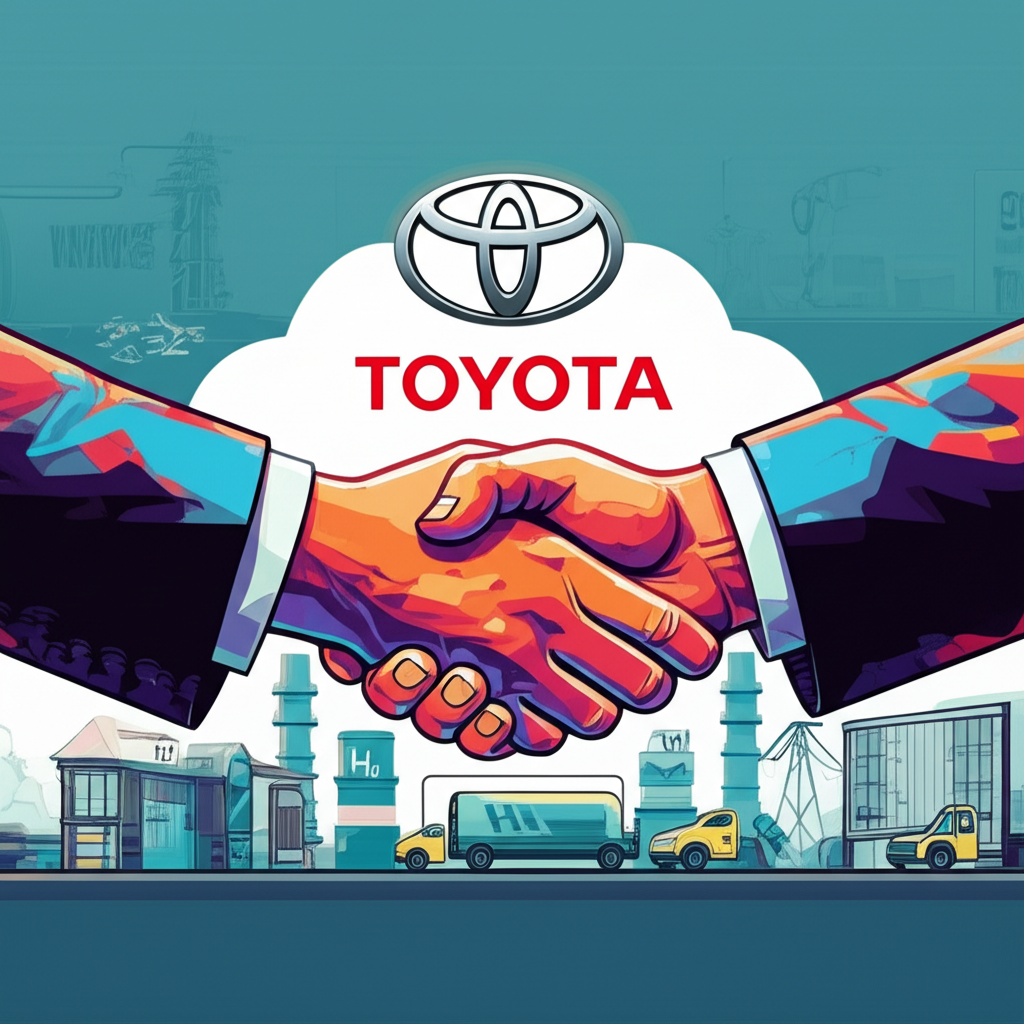Introduction: The Alliance Driving Sustainable Mobility

As global pressure mounts to address climate change and reduce reliance on fossil fuels, a powerful collaboration has emerged between two industry titans: Toyota, a leader in automotive innovation, and Chevron, a major force in global energy. Their joint initiative is not just another corporate partnership—it’s a bold step toward reimagining how we power transportation and reshape energy systems for a cleaner future. By combining Toyota’s cutting-edge advancements in hydrogen fuel cell technology with Chevron’s deep-rooted capabilities in large-scale energy production and distribution, this alliance aims to accelerate the shift toward low-carbon mobility solutions. Together, they are building a roadmap that bridges immediate decarbonization efforts with long-term transformation, setting a new benchmark for cross-sector cooperation in the fight against climate change.
Toyota and Chevron’s Shared Vision for a Decarbonized Future

At the core of this partnership lies a unified ambition: to drive meaningful progress toward a net-zero world. Both companies recognize that achieving deep decarbonization cannot be accomplished in isolation. The complexity of modern energy and transportation systems demands collaboration across industries, and Toyota and Chevron are answering that call. Their shared strategy focuses on deploying scalable, real-world solutions that can deliver measurable emissions reductions today while laying the foundation for transformative change tomorrow. This isn’t about choosing one technology over another—it’s about creating a diverse portfolio of clean energy options that meet the needs of different markets, vehicle types, and consumer preferences. Through coordinated investment and innovation, they aim to prove that sustainability and economic viability can go hand in hand.
Why Renewable Fuels are Critical Now

The momentum behind renewable fuels has reached a tipping point. With governments worldwide implementing stricter emissions regulations and consumers demanding greener choices, the transition away from conventional petroleum is no longer optional—it’s urgent. Renewable fuels offer a pragmatic pathway to cut greenhouse gas emissions without requiring an immediate overhaul of existing vehicles or fueling networks. Unlike some emerging technologies that are still in development, these fuels can be deployed at scale today, making them essential for sectors where electrification remains challenging, such as aviation, shipping, and heavy-duty freight. By integrating renewable gasoline and other low-carbon liquid fuels into current infrastructure, Toyota and Chevron are helping bridge the gap between today’s reality and tomorrow’s fully sustainable energy ecosystem.
The Renewable Gasoline Blend: A Near-Term Solution

One of the most promising near-term initiatives from the Toyota-Chevron collaboration is the development of renewable gasoline blends. These next-generation fuels are designed to drastically reduce lifecycle carbon emissions—by up to 80% compared to conventional gasoline—while remaining fully compatible with the millions of internal combustion engine (ICE) vehicles already on the road. Derived from sustainable feedstocks like agricultural residues, used cooking oil, and non-food biomass, renewable gasoline undergoes advanced refining processes such as hydrotreating to produce a fuel chemically identical to traditional gasoline. This “drop-in” capability means drivers don’t need to buy new vehicles or modify engines, making it one of the fastest ways to lower transportation emissions across vast fleets and everyday drivers alike.
The Port of Portland Pilot Project: A Real-World Test
To put this technology to the test, Toyota and Chevron launched a landmark pilot program at the Port of Portland. In this real-world environment, Chevron’s renewable gasoline blend was used to power a fleet of Toyota vehicles and equipment operating under demanding logistical conditions. The goal? To evaluate performance, durability, and actual emissions reductions in a high-usage setting typical of commercial and industrial operations. Data collected from the pilot helps validate the fuel’s effectiveness and informs future scalability. According to Toyota’s official announcement, the project specifically targeted hard-to-abate transportation segments, demonstrating how lower carbon intensity fuels can make an immediate impact where full electrification is not yet feasible. Toyota and Chevron Join Forces to Explore Future Renewable Energy Solutions
Understanding Renewable Gasoline: Beyond Traditional Fuels
Renewable gasoline stands apart from conventional fossil fuels not in how it functions, but in how it’s made. While it performs identically in engines, its origins are rooted in sustainability. Instead of crude oil, it’s produced from renewable organic matter through processes like hydroprocessing or biochemical conversion. This allows the fuel to retain the high energy density and seamless integration of standard gasoline while slashing its carbon footprint across the entire lifecycle—from feedstock sourcing to combustion. Unlike ethanol, which often requires blending at limited concentrations due to material compatibility issues, renewable gasoline can be used as a direct replacement. Its ability to leverage existing pipelines, storage tanks, and pumps makes it a highly practical option for rapidly scaling low-carbon fuel adoption without massive infrastructure investments.
Hydrogen as a Long-Term Energy Strategy
Looking beyond immediate solutions, Toyota and Chevron are investing heavily in hydrogen as a cornerstone of long-term decarbonization. Green hydrogen—produced by splitting water using renewable electricity—offers a clean, versatile energy carrier suitable for everything from passenger vehicles to industrial manufacturing and grid storage. The partnership is focused on building out the full hydrogen value chain, including production, transportation, storage, and end-use applications. By aligning Toyota’s expertise in fuel cell systems with Chevron’s capacity to develop large-scale energy infrastructure, the alliance is working to overcome key barriers that have historically limited hydrogen’s widespread adoption.
Toyota’s Hydrogen Leadership: The Mirai and Beyond
Toyota has been at the forefront of hydrogen mobility for over two decades. The Mirai, first introduced in 2014 and now in its second generation, serves as a real-world demonstration of hydrogen fuel cell electric vehicle (FCEV) technology. With zero tailpipe emissions, a driving range comparable to gasoline vehicles, and refueling times of just a few minutes, the Mirai offers a compelling alternative to battery-electric models, especially for users with limited charging access or higher daily mileage needs. Beyond consumer vehicles, Toyota is actively developing hydrogen-powered commercial trucks, buses, and even stationary power systems. This broad application underscores Toyota’s belief that hydrogen will play a vital role in achieving true carbon neutrality across multiple sectors.
Chevron’s Role in Building the Hydrogen Ecosystem
For hydrogen to reach its potential, robust infrastructure is essential—and that’s where Chevron’s expertise becomes indispensable. As a global energy provider, Chevron brings decades of experience in managing complex supply chains, large-scale project development, and regulatory navigation. The company is currently involved in numerous hydrogen initiatives, including pilot projects for green hydrogen production, investments in carbon capture and storage (CCS) to support blue hydrogen, and plans to expand the network of hydrogen refueling stations across key markets. By partnering with Toyota, Chevron is helping create an integrated ecosystem that supports both light-duty and heavy-duty FCEVs, ensuring that hydrogen fuel is not only technically viable but also commercially accessible.
Broader Implications: What This Means for Consumers and the Industry
This strategic alliance has far-reaching consequences for both everyday drivers and the broader transportation landscape. For consumers, it means more choices when it comes to sustainable mobility. Whether someone drives a hybrid, a plug-in hybrid, a battery-electric vehicle, or a conventional gasoline car, the availability of renewable gasoline and expanding hydrogen infrastructure ensures that nearly every type of vehicle can become part of the solution. It also signals a future where multiple powertrains coexist, each serving different needs based on geography, usage patterns, and lifestyle.
The question of whether Toyota will continue producing gasoline-powered vehicles is one that reflects the complexity of the energy transition. The answer is yes—but with a critical difference. Toyota is committed to a multi-pathway approach, continuing to refine internal combustion engines for greater efficiency while pairing them with low-carbon fuels like renewable gasoline. This strategy acknowledges that a one-size-fits-all solution isn’t realistic given the diversity of global markets and consumer needs. By making cleaner fuels available now, Toyota ensures that even traditional vehicles contribute to emission reductions, extending their relevance in a decarbonizing world. Toyota’s Multi-Pathway Approach to Carbon Neutrality
Navigating the Energy Transition: Challenges and Opportunities
Despite the promise of renewable fuels and hydrogen, significant hurdles remain. Scaling up production of green hydrogen and renewable gasoline requires substantial capital investment, technological innovation, and supportive government policies. Cost competitiveness with conventional fuels remains a challenge, particularly in the early stages of deployment. Infrastructure development—especially hydrogen refueling stations—must keep pace with vehicle adoption to avoid bottlenecks. Yet, these obstacles are matched by enormous opportunities. The global push for clean energy is driving innovation, creating new industries, and generating high-quality jobs in engineering, manufacturing, and clean tech. Moreover, a diversified energy mix enhances energy security and resilience, reducing dependence on volatile fossil fuel markets.
Conclusion: A Collaborative Path Towards a Greener Tomorrow
The partnership between Toyota and Chevron exemplifies how collaboration across sectors can drive meaningful environmental progress. By pursuing dual tracks—advancing renewable gasoline for immediate emissions cuts and building a comprehensive hydrogen ecosystem for long-term transformation—they are crafting a realistic, inclusive vision for sustainable mobility. This alliance goes beyond technology; it’s about creating systems that work for people, industries, and the planet. As their initiatives gain traction, they set a precedent for how large corporations can lead the energy transition through innovation, shared responsibility, and long-term thinking. The road to a greener tomorrow is complex, but with partnerships like this, it’s becoming increasingly navigable.
Frequently Asked Questions (FAQs)
1. What is the primary focus of the strategic alliance between Toyota and Chevron?
The primary focus is on developing and deploying renewable fuels, including advanced renewable gasoline blends and hydrogen energy solutions, to accelerate decarbonization in the transportation sector and beyond.
2. How does renewable gasoline differ from conventional gasoline, and what are its environmental benefits?
Renewable gasoline is chemically identical to conventional gasoline but is produced from sustainable sources like biomass, leading to significantly lower lifecycle carbon emissions (up to 60-80% reduction). It’s a “drop-in” fuel compatible with existing engines, offering immediate environmental benefits without infrastructure changes.
3. Which specific projects are Toyota and Chevron collaborating on for renewable fuels?
A key collaboration is the Port of Portland pilot project, where Chevron’s renewable gasoline blend is being tested in a fleet of Toyota vehicles and equipment to assess performance and emissions reductions in a real-world setting.
4. Does Toyota currently offer any hydrogen fuel cell vehicles to consumers?
Yes, Toyota is a leader in hydrogen fuel cell electric vehicles (FCEVs), with the Toyota Mirai being its flagship consumer-available model. The company is also developing FCEV technology for commercial vehicles like trucks and buses.
5. What role does Chevron play in developing hydrogen infrastructure for future mobility?
Chevron is crucial in building the hydrogen ecosystem, focusing on developing hydrogen production, storage, and distribution infrastructure, including hydrogen fueling stations, to support the wider adoption of FCEVs and other hydrogen applications.
6. How might the Toyota-Chevron partnership influence the future availability of sustainable energy for vehicles?
The partnership aims to increase the availability of sustainable energy options for vehicles by developing and scaling renewable gasoline blends and expanding the hydrogen fueling infrastructure, offering consumers more choices for lower-carbon transportation.
7. Is Toyota committed to continuing the production of gasoline-powered cars alongside its alternative fuel initiatives?
Yes, Toyota maintains a multi-pathway approach to carbon neutrality, continuing to produce highly efficient gasoline-powered, hybrid, and plug-in hybrid vehicles. The use of renewable gasoline blends allows these vehicles to significantly reduce their environmental impact.
8. What is the long-term vision for decarbonization shared by both Toyota and Chevron?
Their long-term vision is to achieve significant carbon emission reductions across the energy and transportation sectors by developing and deploying a diverse portfolio of low-carbon energy solutions, contributing to global net-zero goals.
9. Are there any differences between Chevron’s existing fuel products (like ethanol-free options) and the new renewable blends?
Yes, while Chevron offers various fuel products, including ethanol-free options, the new renewable blends are distinct. They are specifically engineered from sustainable sources to have a significantly lower carbon intensity on a lifecycle basis, making them a direct solution for decarbonization.
10. What are the key challenges and opportunities in scaling up renewable gasoline and hydrogen solutions?
Challenges include reducing production costs, investing in extensive infrastructure, and ensuring supportive policies. Opportunities lie in creating new green industries, job creation, achieving significant environmental benefits, and establishing more resilient and diversified energy systems.

留言